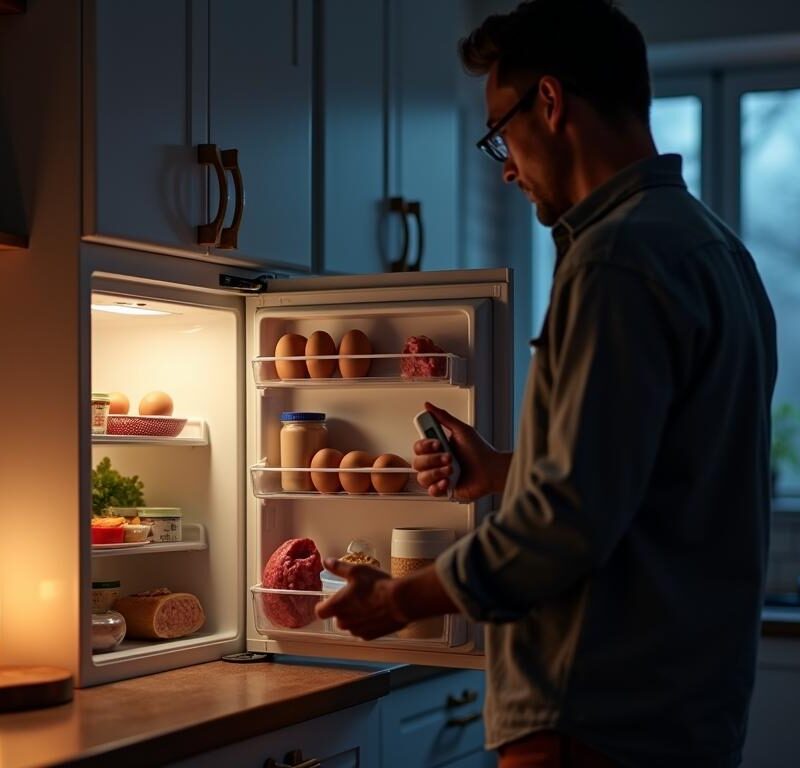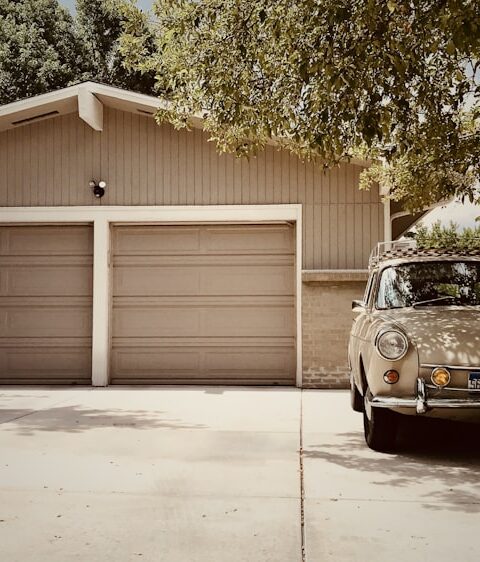When power cuts happen unexpectedly, it’s crucial to know about food safety essentials. One minute you’re planning a big family dinner, and the next, you’re lighting candles to see your way around the kitchen. It’s easy to feel anxious about whether essential items like eggs, dairy, or meat are still usable by the time the lights come back on. In these situations, knowing a few practical tips makes a huge difference, and it can save you from nasty bouts of food poisoning or costly trips to restock everything.
Some people assume the fridge will keep everything cold enough if the door remains closed, but the truth is a bit more complex. Bacterial growth can begin much faster than you might realize, depending on the ambient temperature of your home and how long the power remains off. Even items in the freezer are not always guaranteed to stay safe if the outage drags on. When the temperature rises above a certain threshold, every perishable food is at risk.
How Loss of Electricity Affects Food Quality
Food quality relies heavily on proper temperature control, and when electricity goes out, that temperature quickly rises in enclosed spaces. The magic number to remember is roughly 40°F (4°C). Anything above that, especially for extended periods, creates an ideal environment for bacteria to multiply.
Even if the outage is brief, it can disrupt your routine. You might hurry to cook everything before it spoils, but that doesn’t always work. If the power doesn’t come back soon, you’re forced to think about the shelf-life of perishable foods like chicken, milk, and cooked leftovers. Rather than letting stress take over, a few precautions can save both your meals and your health.
The Risk of Bacterial Growth
Many bacteria, including those causing foodborne illnesses, thrive between 40°F and 140°F (4°C and 60°C). This range is often called the “danger zone.” During a blackout, if your refrigerator contents dip into this zone for more than two hours, it could lead to rapid microbial growth.
Foods such as raw meat, poultry, fish, and any type of dairy product can become hazardous when left unrefrigerated for too long. The changes in taste, texture, or smell might be subtle. That’s why it’s so important to pay attention to how long each item remains unrefrigerated, even if it seems fine at first glance.
Official Recommendations for Temperature
According to various food safety guidelines, the refrigerator temperature should be below 40°F (4°C) and the freezer at 0°F (-18°C) or lower. If you lose electricity, try to keep the door closed as much as possible. Each time you open it, you let warm air in, speeding the climb toward unsafe temperature levels.
Freezers can keep items safe for about 48 hours if they are fully stocked, or about 24 hours if half-full, as long as you don’t open the door often. You can buy small appliance thermometers in advance to spot rising temperatures quickly. Those simple tools can guide your decisions on whether food remains safe to keep or is better tossed out.
Handling Your Refrigerator and Freezer Foods
Many people wonder what to do first when power failures hit. That initial moment is often hectic, but it helps to know which items you should check on immediately. While a sealed refrigerator will maintain a chilled environment for a short period, the clock starts ticking the moment the lights flicker off.
It’s always wise to have a plan. Some households keep an emergency kit ready for outages, which includes things like extra ice packs and coolers. You can transfer highly perishable food items to these coolers and layer them with ice. This won’t preserve everything for a long time, but it buys you valuable hours.
Prioritizing Essential Staples
If you have limited cooler space, you’ll need to prioritize. Dairy, eggs, and raw meats are among the first items you should keep cold. Cooked items, such as leftover casseroles, also become unsafe if left above 40°F for too long.
It’s tempting to think that prepackaged foods like yogurt or cheese will be fine, but once they cross the temperature threshold for a couple of hours, you may be flirting with spoilage. Always check the dates on these products, and rely on both sound and smell if you’re unsure later on.
Checking Food for Spoilage
Once power returns, you might not immediately realize how long certain items have sat at unsafe temperatures. You open the fridge door to find half the items feeling warmer than you’d expect. That’s why you should verify everything carefully before cooking or consuming it.
Pay close attention to meat and seafood since they are very prone to bacterial growth. If you find a package of raw chicken that’s lukewarm to the touch, it’s better to discard it. Spoiled food can contain pathogens like Salmonella or E. coli, and reheating won’t always eliminate them if they’ve had time to multiply.
Inspecting Looks and Smells
A change in color or an off smell is a strong indicator that your food isn’t safe. Milk often sours and develops a thick texture, while meat might turn grayish or start to emit a foul odor. These clues can help you gauge potential harm.
It’s never a good idea to do a taste test if something seems questionable. The rule of thumb is: when in doubt, throw it out. That small loss can save you from days of discomfort later, and the cost of replacing a few items is often insignificant compared to hospital bills for foodborne illnesses.
Dealing with Partial Freezing
During certain outages, you might find items in the freezer partially thawed but still cold or containing ice crystals. These products might still be usable, but be sure they haven’t been in the danger zone for too long. If you didn’t keep track of the time, observe how soft they have become and whether the environment still felt cold during the blackout.
Foods that remain below 40°F can often be refrozen without much risk, although the taste or texture might change slightly. On the other hand, fully thawed items, especially raw meat, might not be worth the risk. If you choose to refreeze anything, label it clearly and plan to cook it soon.
Key Tips for Food Safety During Outages
Some households invest in backup generators to keep critical appliances running. Others use battery-powered solutions or have a stash of ice blocks to keep refrigerators cool. Whatever provisions you have, remember that planning ahead is the best way to prevent a frantic scramble the moment the power goes out.
If you’re expecting a storm or know maintenance is scheduled, consider reducing how many perishable items you keep on hand. Stock up on non-perishable items with lengthy shelf lives. Doing so ensures you still have plenty to eat without risking spoilage. Certain pantry staples like dried pasta, canned vegetables, and powdered milk can be real lifesavers when your fridge becomes unreliable.
Simple Measures to Extend Freshness
Keeping jugs of frozen water in the freezer is a clever trick. These frozen blocks help maintain a low temperature. If a blackout occurs, the extra mass of ice can keep foods safe longer.
Another helpful strategy is to store charcoal or gel packs that you can quickly transfer into coolers. It only takes a few minutes to shift perishable items into a well-insulated space. By keeping the fridge open as little as possible, you help foods stay at a safer temperature for a longer stretch.
Safely Restocking After a Long Outage
After a lengthy disruption, take a detailed look at every item in your kitchen. You may find that sauces, condiments, and other items that you rarely think about have also drifted into the danger zone. Jars of mayonnaise, salad dressings, and certain salsas often contain ingredients that require reliable refrigeration.
It’s sometimes hard to part with half-full containers of more expensive items, but you don’t want to risk your health. Always inspect these products for any visible mold, separation, or unpleasant odor. And if you aren’t entirely certain, the safest option is still to discard.
Rebuilding Your Kitchen Inventory
Starting from scratch can feel overwhelming, but it’s also an opportunity to organize your kitchen better. Replenish the fridge with items that are genuinely fresh, focusing on what you’ll really use in the next week or two. That helps reduce the likelihood of waste in future outages.
Feel free to incorporate new food safety habits into your daily routine. Make sure your fridge thermometer is always visible and functioning. Keep a list of foods that need to be used up sooner rather than later. By staying consistent, you can face the next signal of power failures with a solid plan and minimal stress.
Final Thoughts on Preventing Unwanted Spoilage
It’s unsettling when the lights suddenly go out, and you’re left in a quiet house with a dark kitchen. The good news is that maintaining safe food practices is simpler if you take a few steps ahead of time. Stocking a few extra supplies, understanding temperature thresholds, and monitoring your perishable goods carefully all help reduce any health risks.
Nothing feels worse than throwing away a fridge full of groceries, but risking an illness is far worse. With thoughtful preparation and a bit of caution, you’ll be well-equipped to handle future power failures without losing your peace of mind or your favorite meals. And remember to keep your senses alert if a food’s smell, appearance, or texture seems off, it’s usually best to part ways with it.







